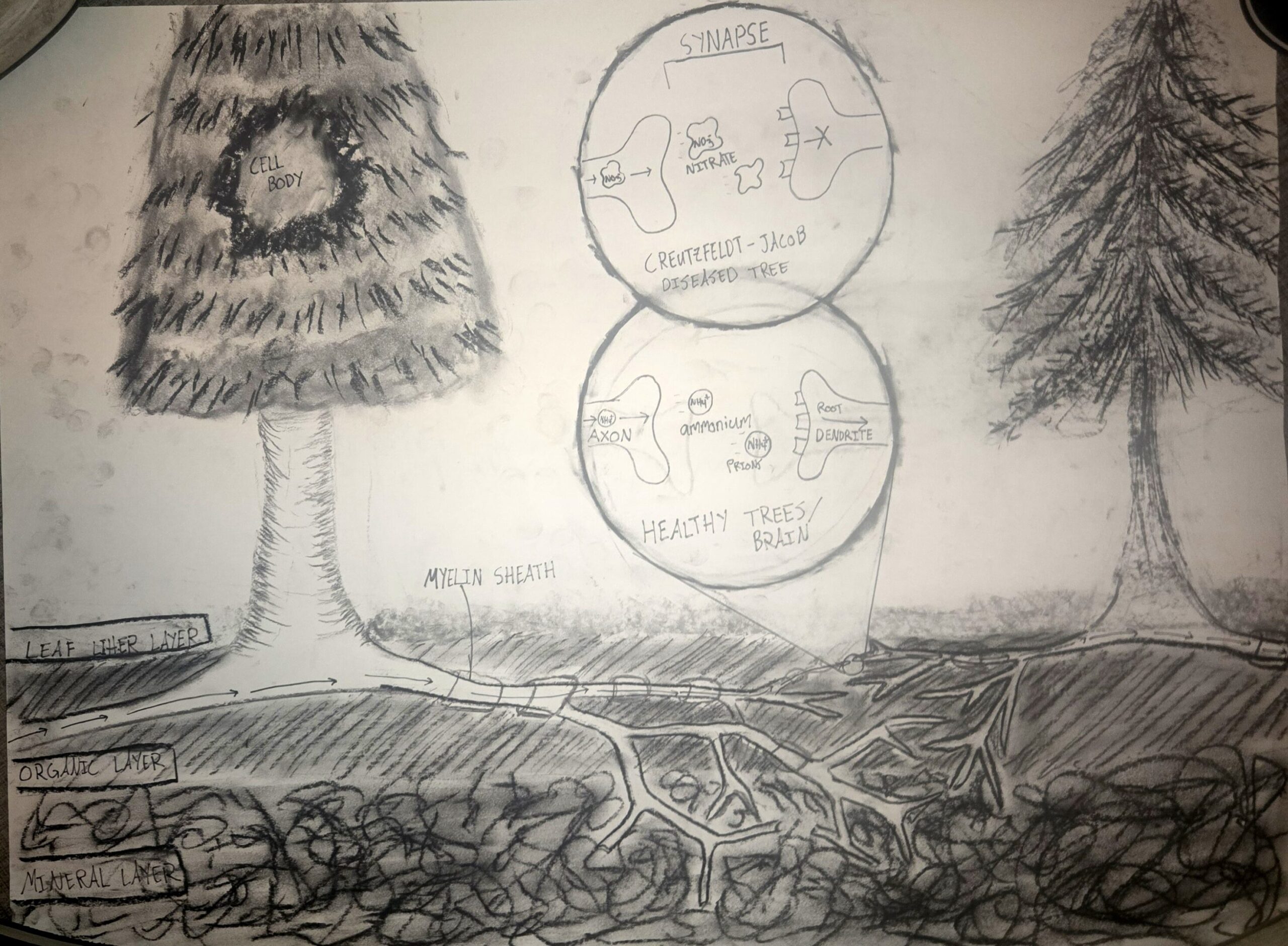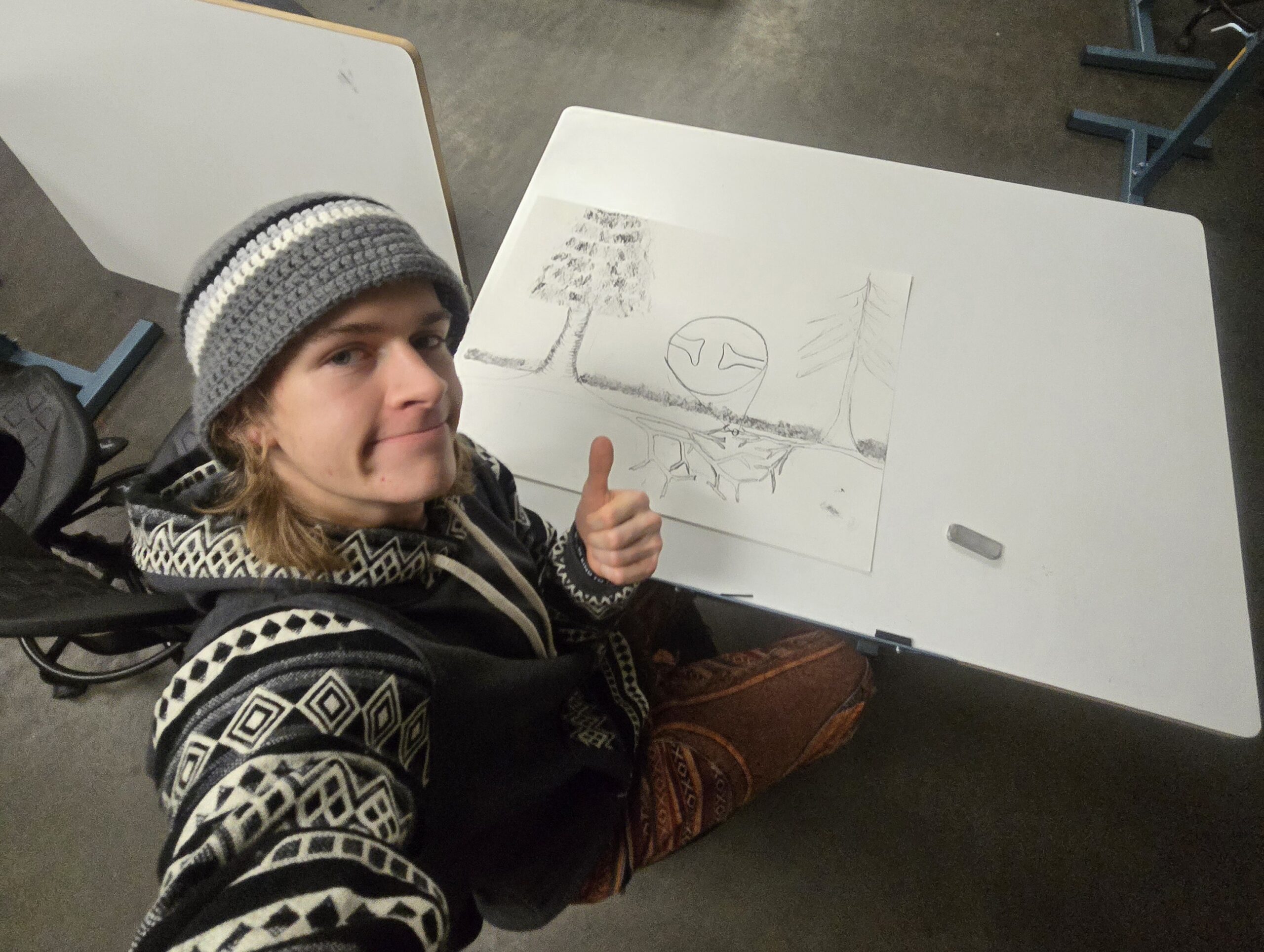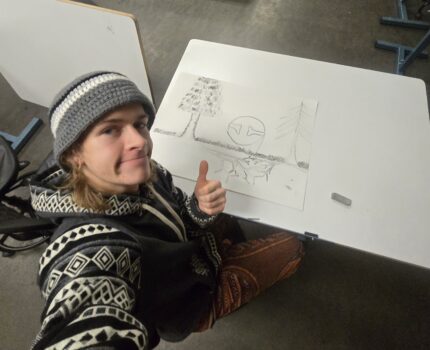The learning objective I’m discussing and expanding on is how neurons carry an electrical charge.
How It Works
Neurons work like one way roads, there’s a path to send messages to the brain and another to send messages to the body. Afferent pathways travel toward the brain, and efferent travel away. The brain responds to afferent messages by stimulating a certain efferent pathway. Stimulation drives the charge of a neuron to reach 55mV’s. Once 55mV’s has been reached, sodium pathways open, putting the charge around 70mV’s. Sodium channels then become inactive, or unopenable, and potassium channels open bringing the charge of a neuron back down. Then sodium channels begin to reopen, where the charge then goes beyond the resting point of -30mV’s, and begins to return to that -30mV resting charge. This order of events causes a chain reaction of opening and closing channels down the neuron toward the axon terminals. Once the chain reaction has reached the terminal, neurotransmitters are released into the synapse that go to stimulate the next neuron. The synapse is just the space between two neurons.
These neurotransmitters are proteins called prions. Dendrites have integral protein receptors that are perfectly shaped to “lock-and-key” with the prions. When enough prions bind to receptors, the message will travel down the neuron. Essentially what vCJD does is alter the shape of the prions so that they cannot bind to the surface proteins of the next dendrite in a chain of neurons (Vacca et al., 2016). Just a few diseased prions can’t always stop a neuron from reaching an action potential though. Prions self replicate inside the brain, and usually will be broken down by an enzyme if they’re misshapen(Sitammagari, 2019). The diseased prions are protease resistant though, and so will grow exponentially without dying or being broken down (Vacca, 2016).
Transmission and Symptoms
Very closely related diseases can be inherited, or even be transmitted sporadically, but vCJD comes specifically from eating meat that has not been properly cooked and contains the diseased prions(Iwasaki, 2016). Due to the nature of what this disease is doing in the brain, it causes a lack of responses in the body from those non-responsive efferent pathways. After a couple months of having the disease, a victim will completely lack the ability to speak or move(Iwasaki, 2016). The buildup of proteins almost acts as a cancer, it clumps together and inhibits bodily function.
The Art Piece

Here there are two trees that are metaphors for pseudounipolar neurons. The crown of the tree is the cell body, the roots run from left to right/ from dendrite to axon. Where the two trees meet is the synapse of the neurons, where ammonium is being transmitted. I chose to make the neurotransmitters nitrogen forms because it actually is what trees take up. Nitrogen has to be mineralized into ammonium before it’s taken up, making it the healthy prions. A lot of the time, nitrification will occur, turning ammonium into nitrate, which cannot be taken up by roots. For this reason it would be the parallel to diseased prions. What I did not capture in the piece is the cancer-like nature of the diseased prions. Diseased prions will exponentially grow in numbers, which is similar to how there’s a huge amount of atmospheric nitrogen that just can’t be taken up, compared to the sustainable amount of nitrogen that can be taken up, like normal prions.
Works Cited
Iwasaki, Yasushi. “Creutzfeldt-Jakob Disease.” Neuropathology, vol. 37, no. 2, 28 Dec. 2016, pp. 174–188, https://doi.org/10.1111/neup.12355.
Sitammagari, Kranthi K, and Wajeed Masood. “Creutzfeldt Jakob Disease.” Nih.gov, StatPearls Publishing, 20 Feb. 2019, www.ncbi.nlm.nih.gov/books/NBK507860/.
Vacca, Vincent M. “CJD.” Nursing, vol. 46, no. 3, Mar. 2016, pp. 36–42, https://doi.org/10.1097/01.nurse.0000480598.84274.0f.

